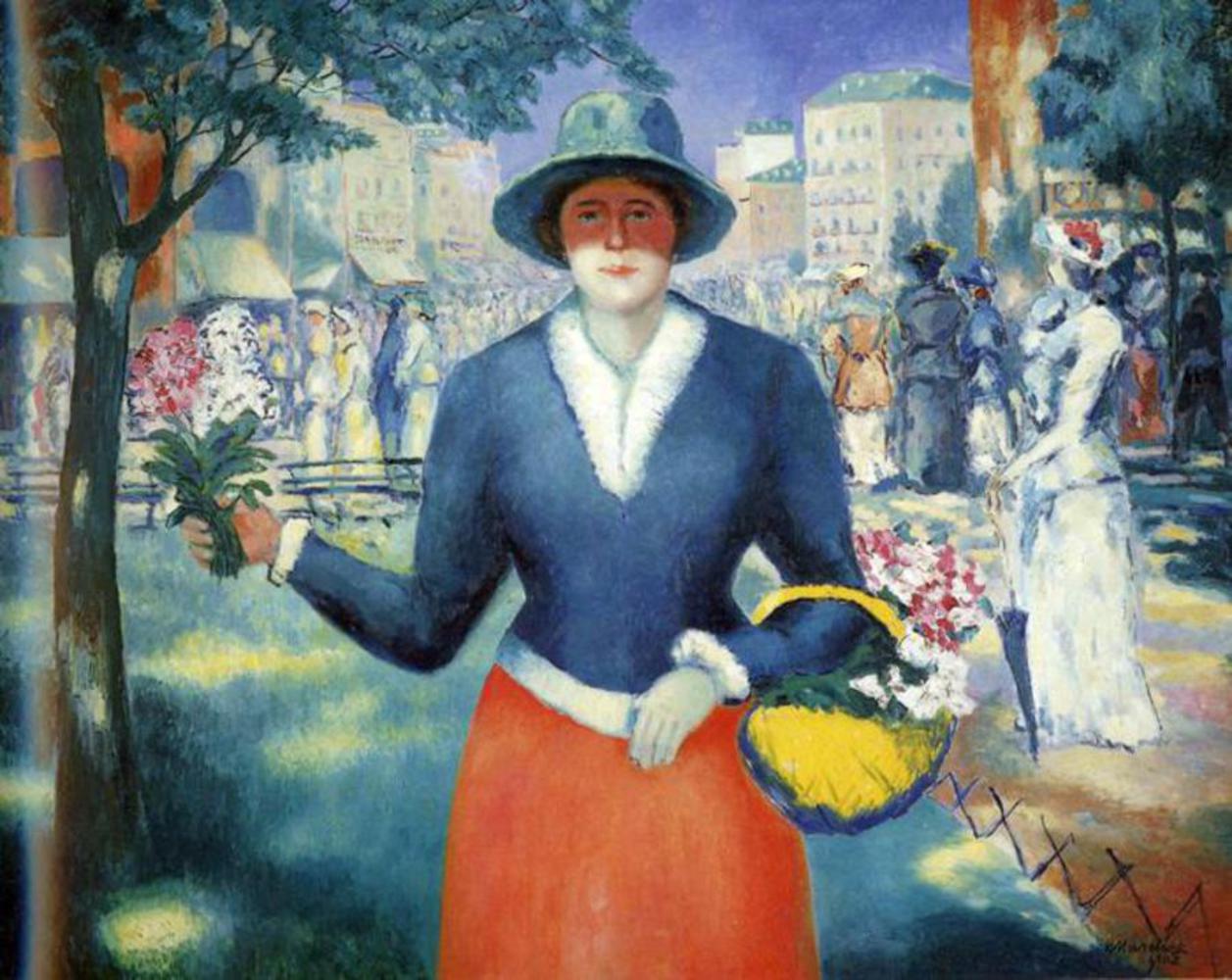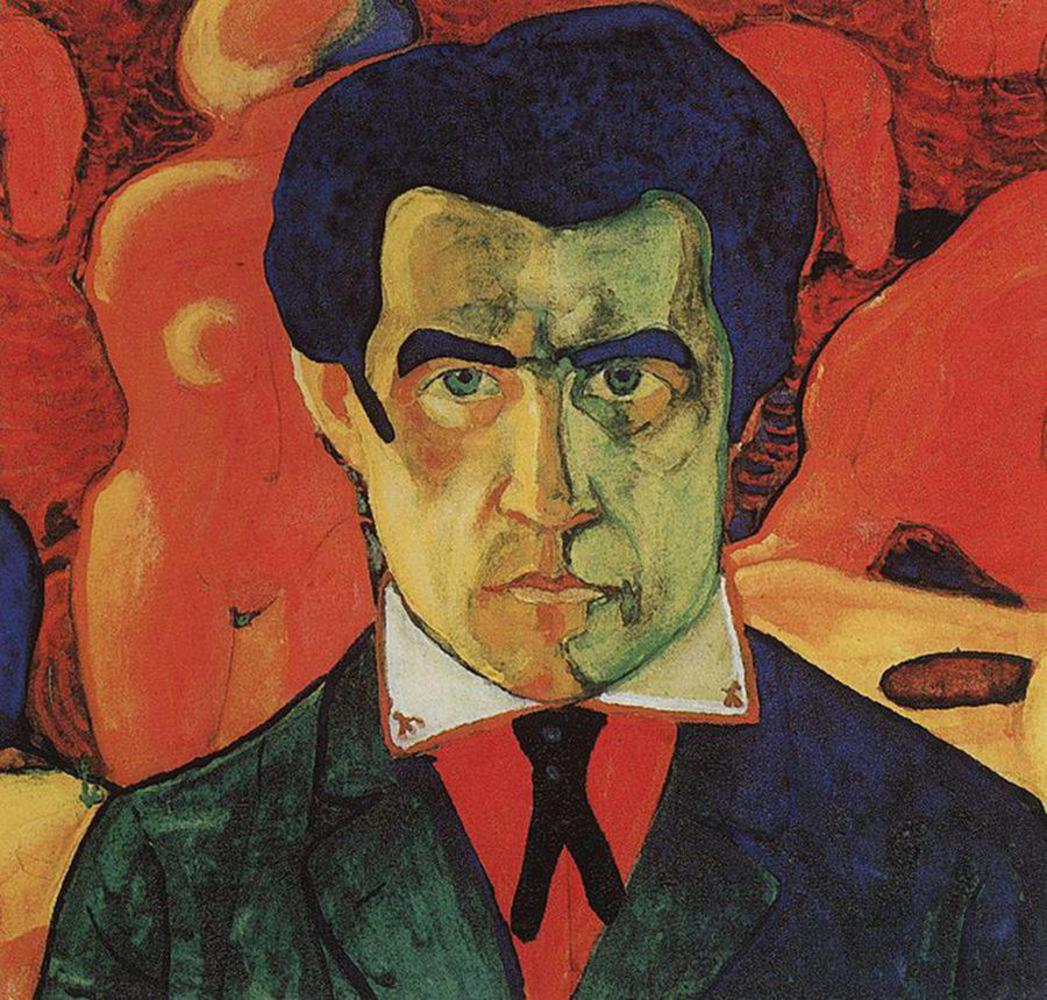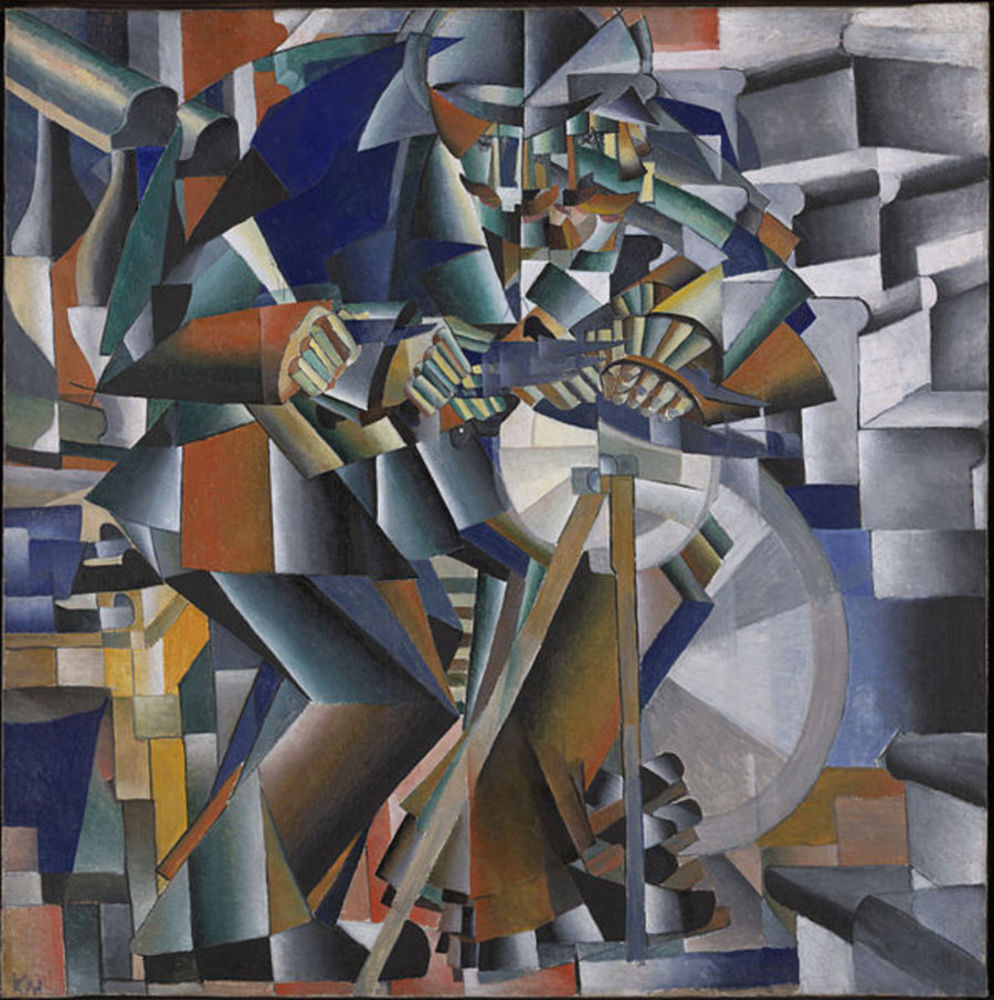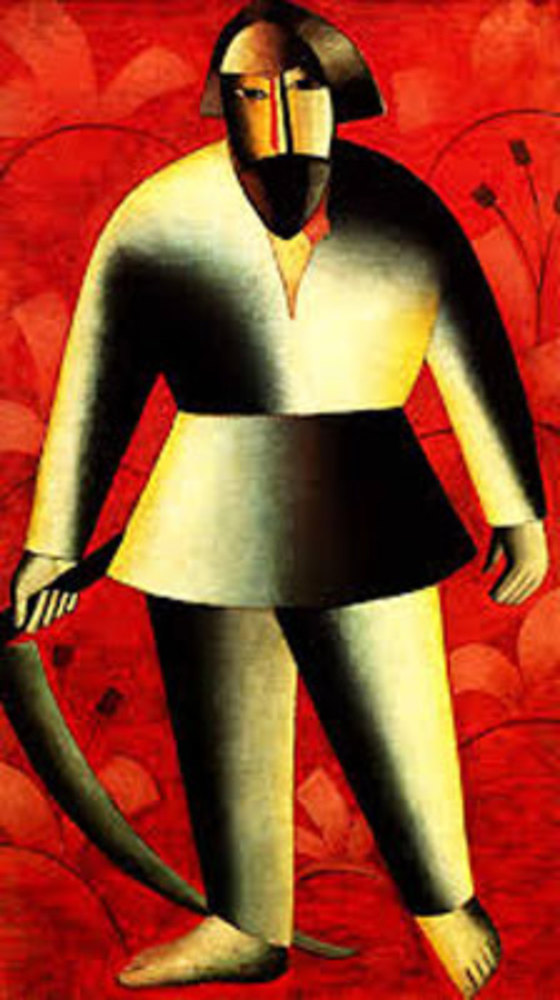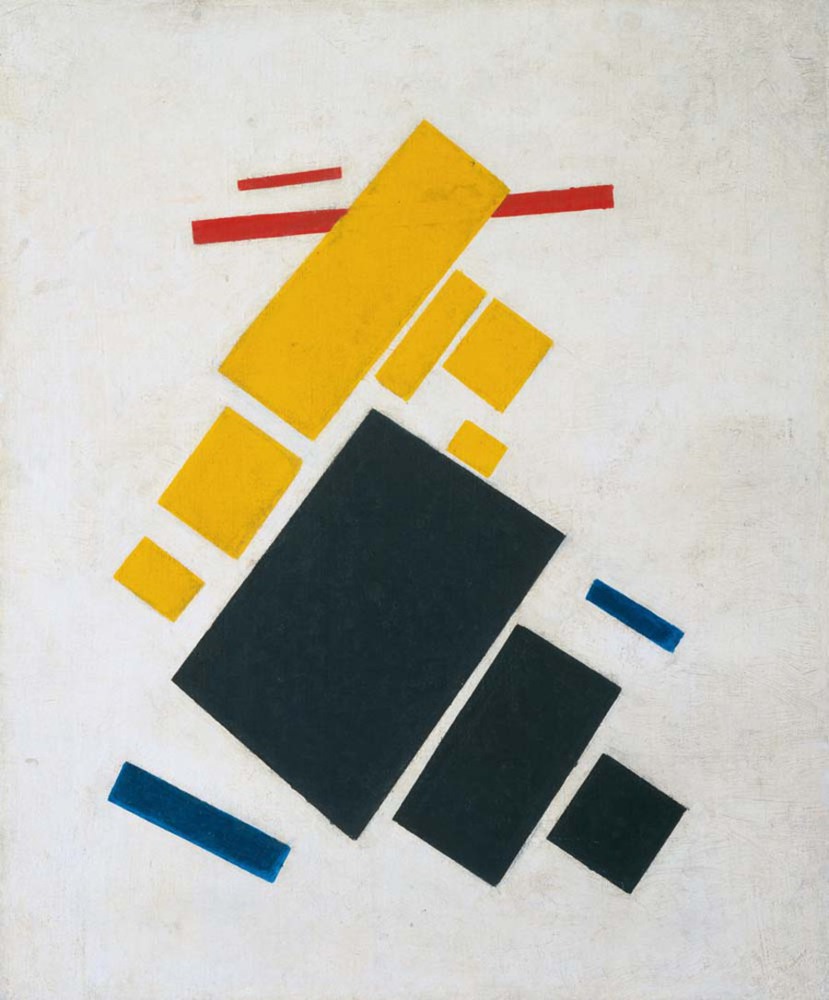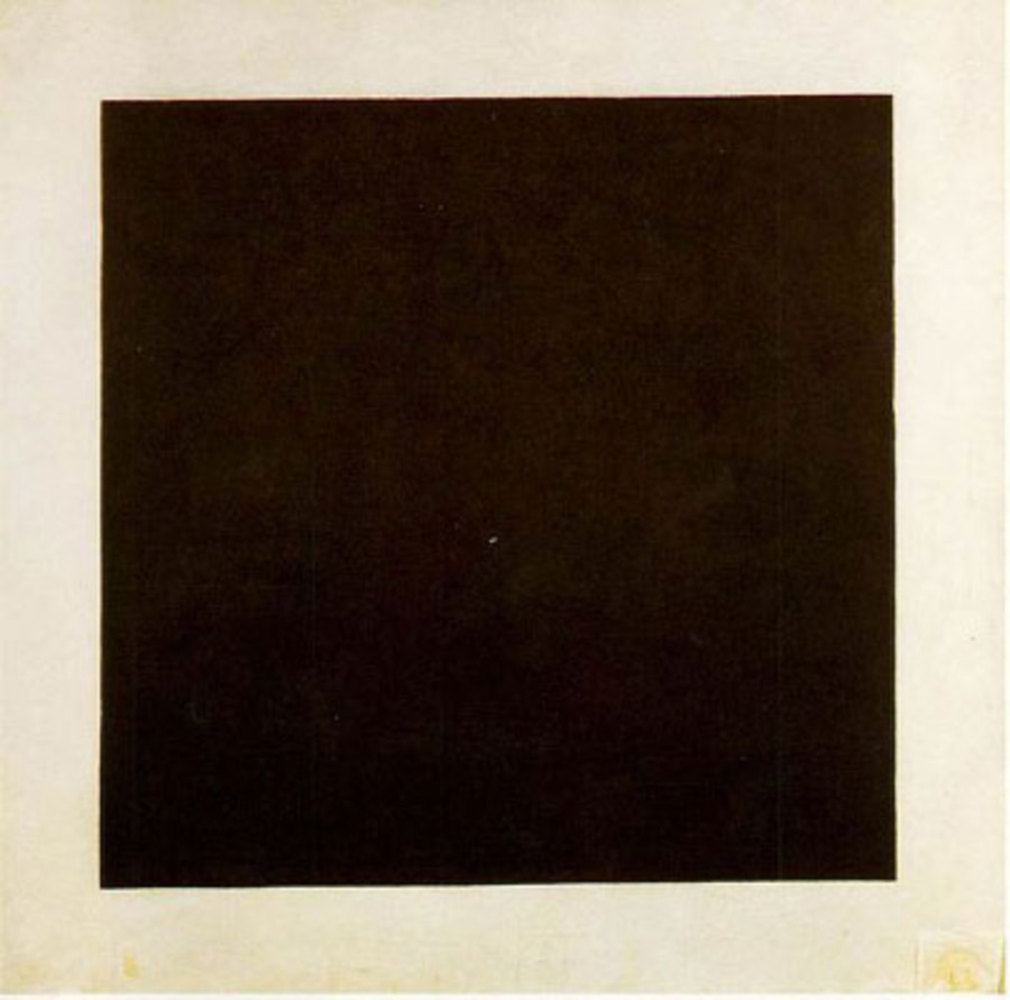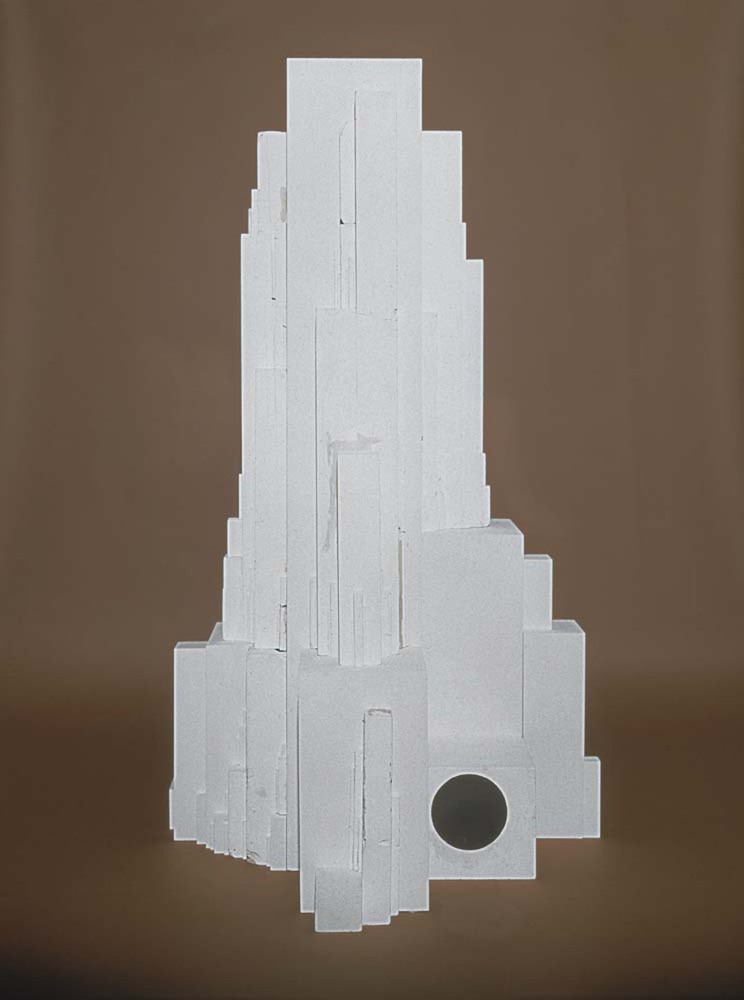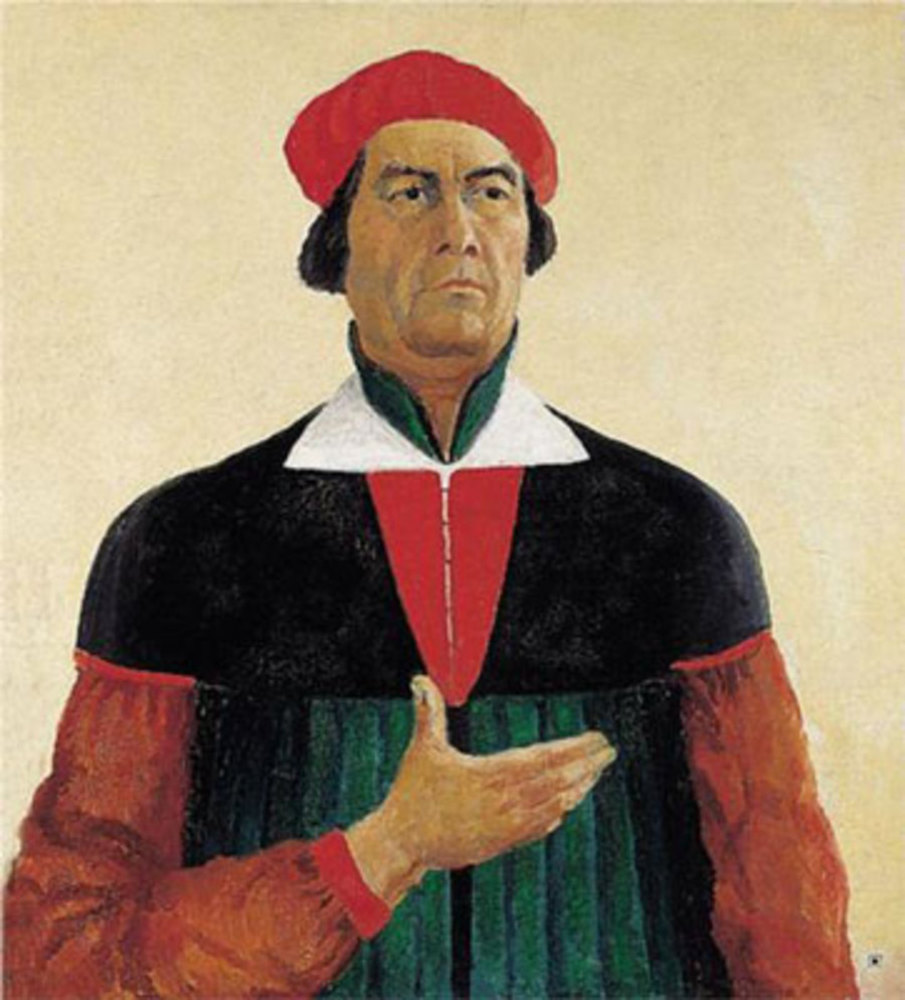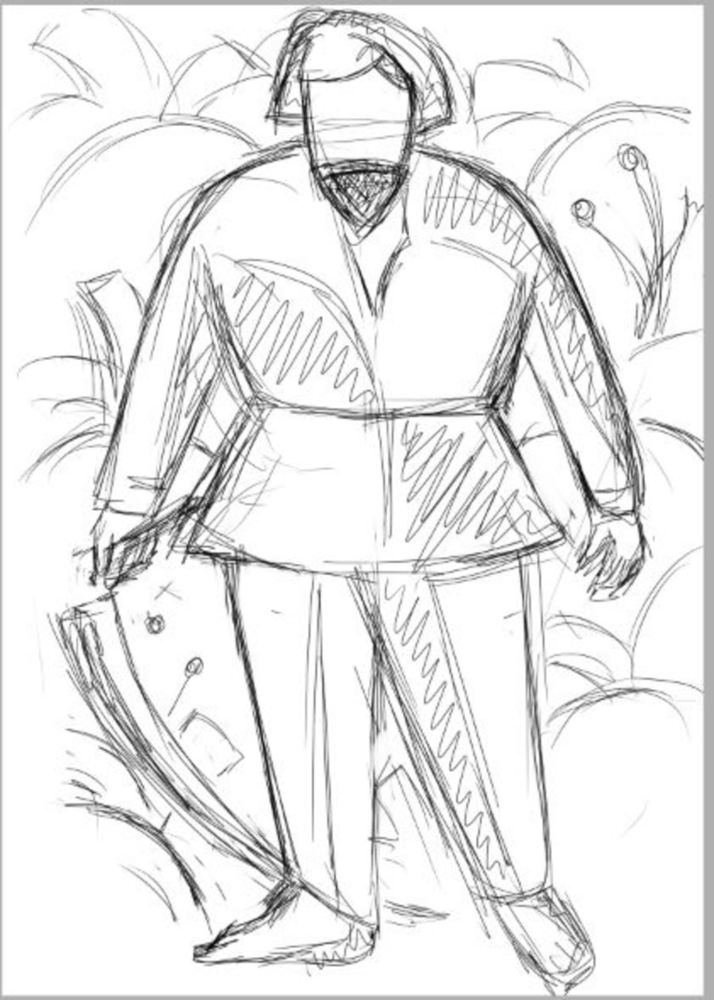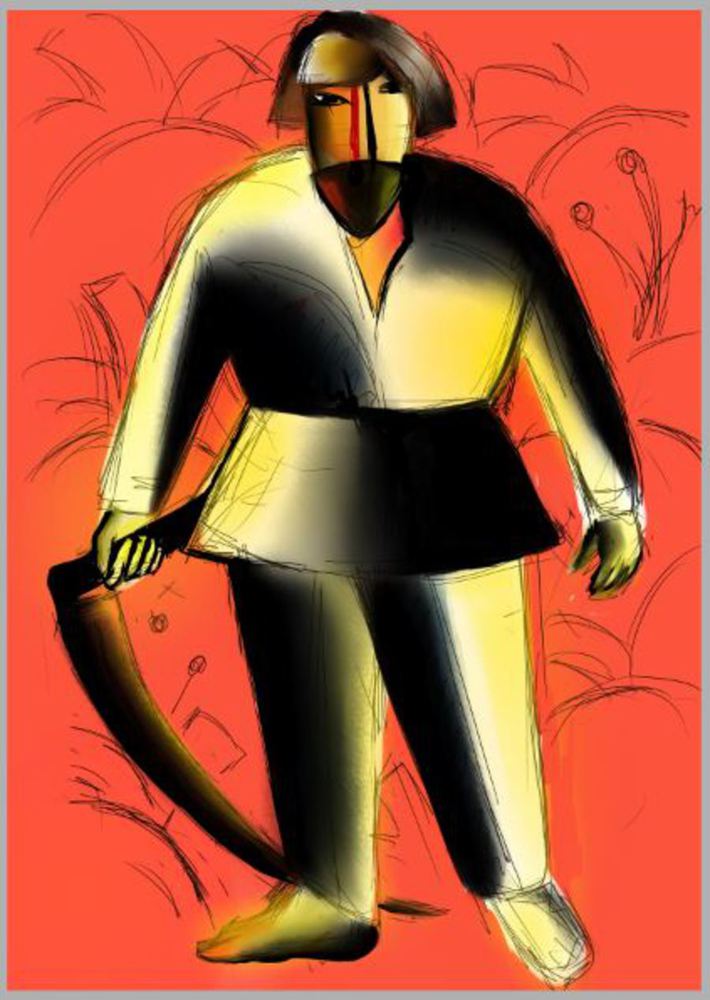Artist - Kazimir Malevich
Born: 1878 in Kiev Moscow
Death: 1935
Early Life: Malevich was the first of fourteen children (5 died before becoming adults). His family moved often in search of work, particularly in sugar factories and railway construction.
Art Styles: Malevich began painting at the age of 12, and attended the Kiev School of Art from 1895. In 1902, Malevich moved to Moscow, and in 1903, he entered the Moscow School of Painting, Sculpture, and Architecture. While first working with Post-Impressionist landscapes, Malevich began to paint peasants in 1909, eventually moving to a style similar to cubism in 1912. He continued to paint figures and still lifes in a Cubo-Futurist style from 1913 - 1914 before finally developing Suprematism in 1915. The new style made use of pure geometrical elements positioned to suggest floating, falling, and other motions. He later reverted back to painting very stylized figures before his death.
